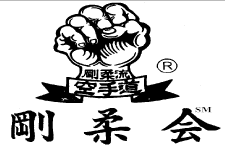¶[ °Ê
(1853-1915)
According to late Dr.
Shiro Hattori, a Japanese linguist Okinawans and Japanese share the same linguistic family
lineage. They, however, apparently separated at least two thousand years ago, so
the two do not sound like the same language. Both linguistic cultures adapted
Chinese characters for writing both family and given name. And yet, the Okinawan
pronunciation of their family names is not neccessarily same as the Japanese
pronounciation.
For example, the surname
¶[ can be pronounced "Higashionna" by the Japanese, thus those who
have that surname in the current island now pronounce their name "Higashionna."
The prominent historian, Dr. Kanjun Higahionna, claimed his family name should be
pronounced "Higashionna." The historian, in fact, is related to
Kanryo Higaonna. Ever since the Japanese government enforced Okinawa to be part of
its prefecture in 1872, all the islanders had to speak standardized Japanese as the
official language.
There was a time in
Okinawa when the same surname was pronounced "Higanuma." During my childhood, I
was more accustomed to calling the Naha Master, Kanryo Higanuma. Neverthless,
"Higaonna" was the commonly accepted pronunciation for that surname after his
death in 1915. During his time everyone called him "Higanuma."
Kanryo Higaonna was born
March 3, 1853 during the time when Okinawa Island was occupied by the Satsuma Clan
FË of Japan. According to the recent study of Iken Tokashiki, President
of Okinawa Goju Ryu Tomarite Karate-Do Kyokai, Kanryo Higaonna was born at Nishimura of
Naha City as the fourth son of Kanryo Higaonna, ¶[ Öp, the 10th generation of
Higaonna family in Haru, ¨. lineage.*
Kanryo Higaonna visited
Fuchou, China, ÈBs around 1877 for three years. There is an
another account in regards to his visit to the city. It is said that he visited the
port city in 1873 for fifteen years. Some Martial Arts historians explain his motives of
visiting the city was to study the Chinese Martial Arts. Higaonna did, in fact,
study a Southern Shaolin Chun style, during his stay in that city. However, his
initial reason for visiting China was explained by other historians that it was the result
of his political involvements.
In 1868, Japan
experienced a major reformation in its history when the Shogun, Tokugawa was over
turned by the liberal clans of Emperor Meiji. During the Tokugawa Shogunate
era, Okinawa was part of the Satsuma Clan, the south end clan of Japan while the
island also maintained their administrative connection with the Chinese government.
The Meiji Reformation
brought Japan nationalism. The Meiji government wanted Okinawa as its sole
affiliation and wanted the island to discontinue its trade with China. Okinawa, at
this time, was divided into two political factions one was pro-Japan and the other was
pro-China.
One close associate of
Kanryo Higaonna was Lord Yoshimura, `ºäa who had an enterprising trade of tea
between the city Fuchou and Okinawa. He was a prominent pro-China activist who
tried to block the Japanese settlement in Okinawa. According to historians,
Higaonna carried a letter of referral for Lord Yoshimura for his trip. Higaonna
never explained to anyone about the letter and stowed away with a few companions for
China. In the city of Fuchou, there was a consulate of Okinawa called Ryukyu Kan,
or ®
Ù. Apparently, the Ryukyu Kan represented an Okinawan petition then
to the Chinese Government requesting its international pressure against the Japanese
occupation of Okinawa. One posibility was that Higaonna was a chosen messanger
by the pro-China Okinawa for updating others of the situation on the island.
In 1879, two years after
Higaonna's departure, Okinawa was officially ordered by the Japanese government to
become its prefecture with presence of an army of Japanese police and officials. It
was an extremely intense period of time for Okinawans so that earlier assumptions that
Higaonna left for China for the purpose of inquiring study of Karate was unlikely.
It was said that Higaonna
stayed in China for three years. During his stay, he supported himself by making and
selling bamboo wares. Also, he had an opportunity to study some of the Chinese
Martial Arts in the city. According to Reikichi Ohya**, åÆçg, Higaonna
was one of those who studied from a Chinese named Wei Shinzan. Wei was the student
of Leu Luko who also taught Higaona so-called Fukien Crane Chang, ß.
Fukien Crane was a combined school with White Crane of South Shaolin Chang and Four
Ancestor Chang, Üc.
In China, there were two
counter parted arts of Chang, or fist. One is categorized as Hard style , or
External style OÆ. The other is Soft style _ or Internal style àÆ.
Hard and External style represent Zen Budhist initiated school such as various branches of
Shao-lin Chun, Ñ and Soft and Internal style represent Yee Chuen, Ó,
Pai Kua Chang, ªT¶ and Tai Chi Chuen ¾É.
The Chinese system of
fist that Kanryo Higaonna studied from Wei Shinzan and Leu Luko was also known by its name
Pan Gainoon, ê¼d¼î which literally means "one half is hard and other half
is soft". Those kata practiced in the current Goju-Ryu school like Sanchin
Oí, Sanseiru O\Z, Pecchurin Sëª all originated from that style.
Prior to visiting China,
Higaonna studied Naha-te from Seiso Aragaki, V_¢Í(1840-1920) of Kume.
Aragaki was well known among Okinawans with his favorite Kata called Seisan, \Oà.
Unlike Shuri-te, Naha-te represents newly inported Chinese forms from Fukien
Province of China. After his return from China, Higaonna systemized the Naha-te with
comtemparary Chinese art, thus it was called To-te, è or Chinese Hand.

* nÃ~B«FußeèÌc
¶[°Êv¹ óè Martial-Arts Magazine ¬ü°oÅ p.40, June,
1989,Japan
**
åÆçgFuóèÌK¢ûvàÐ 11A1966 Japan
 CHOJUN
MIYAGI
CHOJUN
MIYAGI

GOGEN YAMAGUCHI

GOSEI YAMAGUCHI

